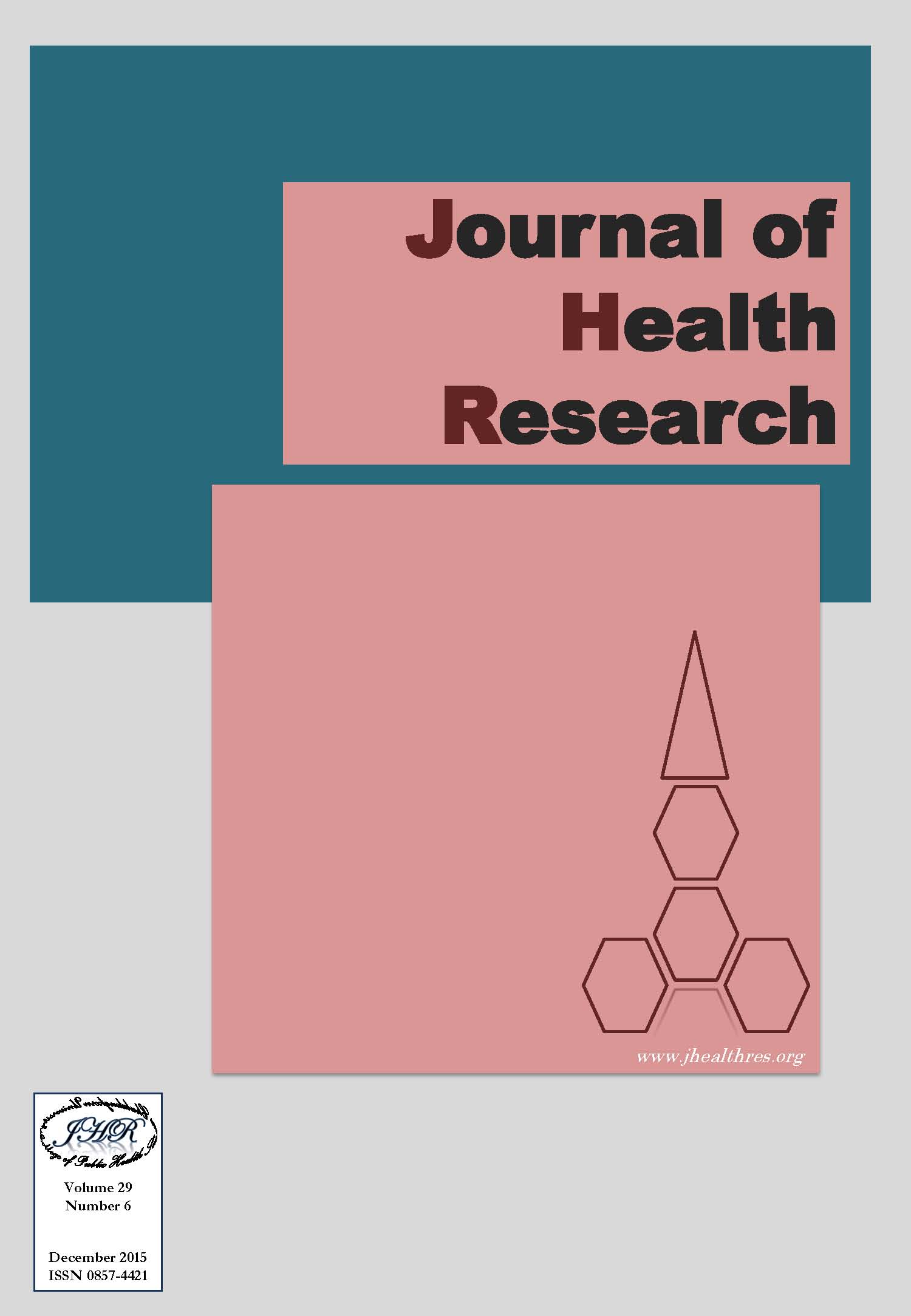Validation of Liquid Chromatography–Tandem Mass Spectrometric Method for Simultaneous Determination of Lopinavir and Ritonavir in Human Plasma, and Its Application in a Bioequivalence Study in Thai Volunteers
Keywords:
Lopinavir, Ritonavir, Validation, Bioequivalence, Liquid chromatography tandem mass spectrometryAbstract
Background: A reliable, sensitive and rugged LC-MS/MS method was developed and validated for simultaneous determination of lopinavir and ritonavir in human plasma in order to use in a bioequivalence study.
Methods: Extraction of both analytes and their deuterated internal standards (ISTDs) from plasma samples was performed by using a simple liquid-liquid extraction method. Chromatographic separation was performed on Shimadzu UPLC system using ZORBAX Eclipse XDB-C8 (4.6 x 150 mm, 5 µm) analytical column. The mobile phase consisted of 2 mM ammonium formate (pH 4.5) and organic mixture (10% methanol in acetonitrile) (25:75). The isocratic mode of mobile phase was pumped at a flow rate 0.7 mL/min. The run time for analysis of each sample was 4.3 minutes. Ionization and detection of analytes and ISTDs were performed by TSQ Quantum Ultra (USA) triple quadrupole mass spectrometer with electrospray ionization probe. All analytes were monitored using the multiple reaction monitoring (MRM) in positive ion mode. Calibration curves with a range of 9.946 to 4923.332 ng/mL for lopinavir and 1.013 to 302.643 ng/mL for ritonavir were established using 0.25 mL human plasma.
Results: The intra- and inter-day precision and accuracy was 1.1 to 8.3% for precision and 95.6-100.1 % for accuracy. The mean recovery for lopinavir, ritonavir, ISTD of lopinavir and ISTD of ritonavir were 61.9%, 56.3%, 65.7% and 59.8%, respectively. The method was applied to a bioequivalence study of lopinavir/
ritonavir 100/25 mg tablets manufactured by the Government Pharmaceutical Organization (GPO), Thailand, in 50 healthy Thai male volunteers under fasting condition. The results showed the bioequivalence of lopinavir/ritonavir 100/25 mg tablets of GPO to the reference product Aluvia® 100/25 mg tablets.
Conclusions: According to the results of bioequivalence study, the generic product of lopinavir/ritonavir 100/25 mg tablets of GPO can be used interchangeably with the reference product Aluvia® 100/25 mg tablets.







